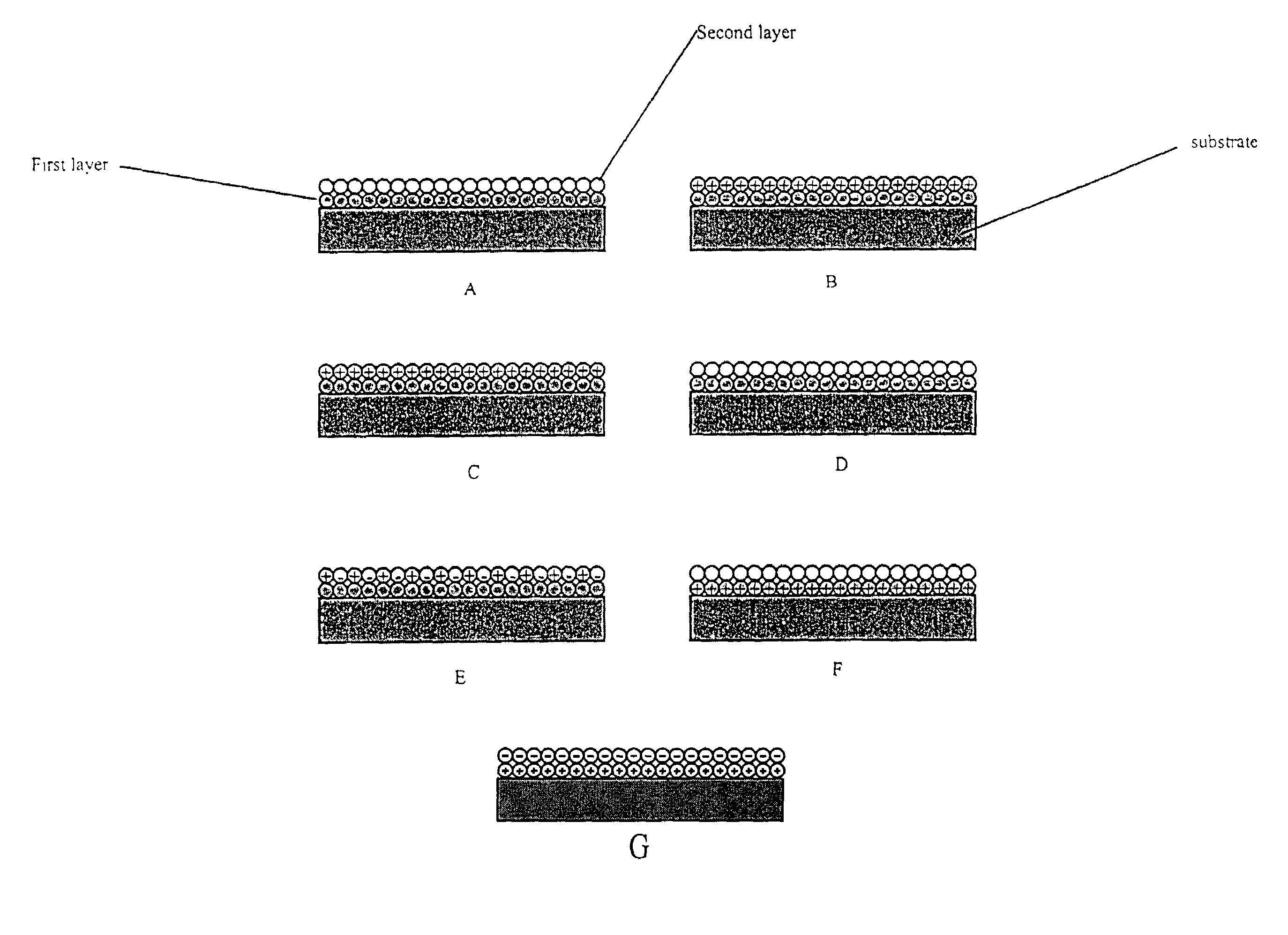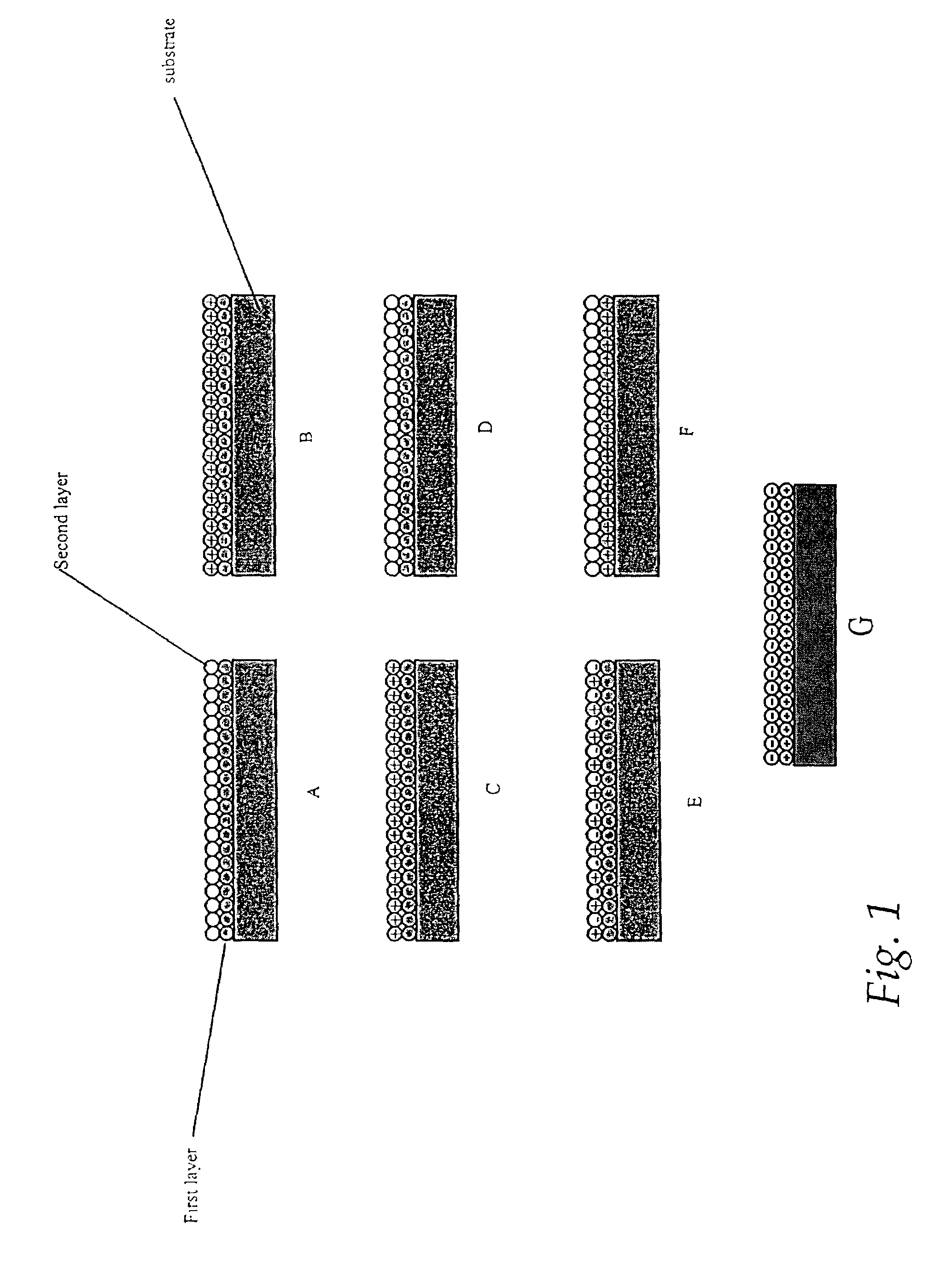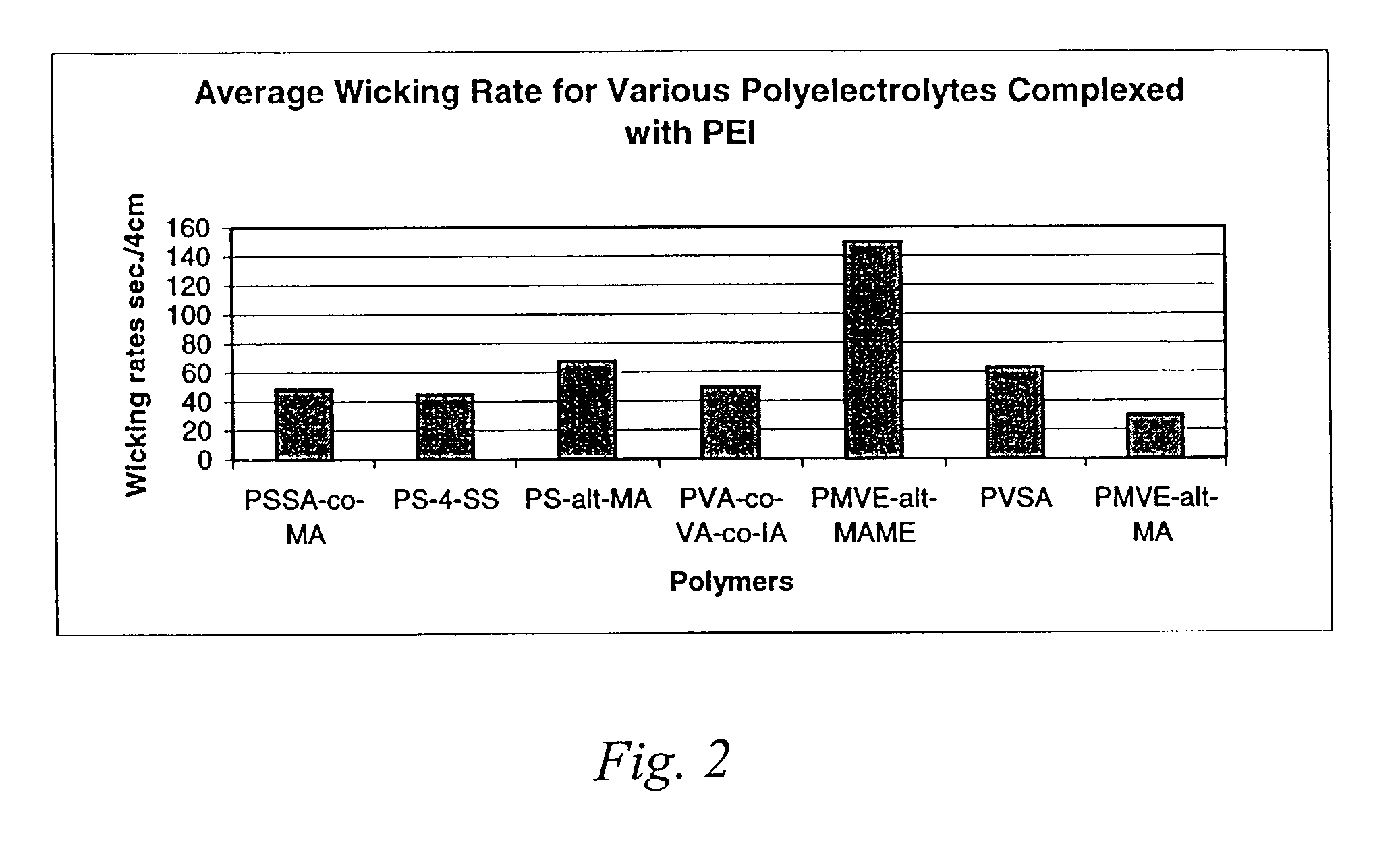Multi-layer coated porous materials and methods of making the same
a technology of porous materials and coatings, applied in the field of multi-layer coated substrates, can solve the problems of inability to meet the requirements of the application of the patent, and the inability to stabilize the polymer film deposited by the method, etc., and achieves the effects of low cost, limited leaching, and high density functional groups
- Summary
- Abstract
- Description
- Claims
- Application Information
AI Technical Summary
Benefits of technology
Problems solved by technology
Method used
Image
Examples
example 1
7.1. Example 1
Hydrophilic Surface
[0137]A porous plastic sheet made by Porex Corporation (pore size 7 micron, 35% pore volume) was preactivated with oxygen plasma (EURO PLASMA CD600PC) at 100 watt, 120 mm Hg for 5 minutes. The sheet become hydrophilic and has a wicking rate of 60 seconds / 4 cm. The pre-activated porous plastic sheet was immersed into 0.1% or 1% of PEI (BASF, MW 750,000) ethanol-water solution for 10 minutes. Then the coated sheet was rinsed with 100 times water in an ultrasonic bath (VWR) at room temperature for 5 minutes. This washing was repeated three times. The rinsed porous plastic sheet then was immersed into certain concentration of 0.1% or 1% PAA (Aldrich, 523925, MW 250,000) ethanol-water solution for 10 minutes. The coated sheet was washed with 100 times water in an ultrasonic bath (VWR) at room temperature for 5 minutes. This washing was repeated three times. The treated sheet was dried at room temperature.
example 2
7.2. Example 2
Hydrophilic Surface
[0138]A porous plastic sheet made by Porex Corporation (pore size 7 micron, 35% pore volume) was preactivated with corona discharge (Corotech, Corotreator) at 200 watt for 2 minutes. The sheet become hydrophilic and has a wicking rate of 60 seconds / 4-cm. The pre-activated porous plastic sheet was immersed into 0.1% or 1% of PEI (BASF, MW 750,000) ethanol-water solution for 10 minutes. Then the coated sheet was rinsed with 100 times water in an ultrasonic bath (VWR) at room temperature for 5 minutes. This washing was repeated three times. The rinsed porous plastic sheet then was immersed into certain concentration of 0.1% or 1% PAA (Aldrich, 523925, MW 250,000) ethanol-water solution for 10 minutes. The coated sheet was washed with 100 times water in an ultrasonic bath (VWR) at room temperature for 5 minutes. This washing was repeated three times. The treated sheet was dried at room temperature.
example 3
7.3. Example 3
Hydrophilic Surface
[0139]A porous plastic sheet made by Porex Corporation (pore size 7 micron, 35% pore volume) was preactivated with oxygen plasma (EUROPLASMA, CD 600PC) at 100 watt, 120 mm Hg for 5 minutes. The sheet become hydrophilic and has a wicking rate of 60 seconds / 4 cm. The pre-activated porous plastic sheet was immersed into 1% of PEI (BASF, MW 750,000) ethanol-water solution for 10 minutes. Then the coated sheet was rinsed with 100 times water in an ultrasonic bath (VWR) at room temperature for 5 minutes. This washing was repeated three times. The rinsed porous plastic sheet then was immersed into 1% of poly-DL-aspartic acid, sodium salt (Sigma, 47789-3, MW 3000) ethanol-water solution for 10 minutes. The coated sheet was washed with 100 times water in an ultrasonic bath (VWR) at room temperature for 5 minutes. This washing was repeated three times. The treated sheet was dried at room temperature.
PUM
| Property | Measurement | Unit |
|---|---|---|
| pore size | aaaaa | aaaaa |
| thickness | aaaaa | aaaaa |
| thickness | aaaaa | aaaaa |
Abstract
Description
Claims
Application Information
 Login to View More
Login to View More - R&D
- Intellectual Property
- Life Sciences
- Materials
- Tech Scout
- Unparalleled Data Quality
- Higher Quality Content
- 60% Fewer Hallucinations
Browse by: Latest US Patents, China's latest patents, Technical Efficacy Thesaurus, Application Domain, Technology Topic, Popular Technical Reports.
© 2025 PatSnap. All rights reserved.Legal|Privacy policy|Modern Slavery Act Transparency Statement|Sitemap|About US| Contact US: help@patsnap.com



